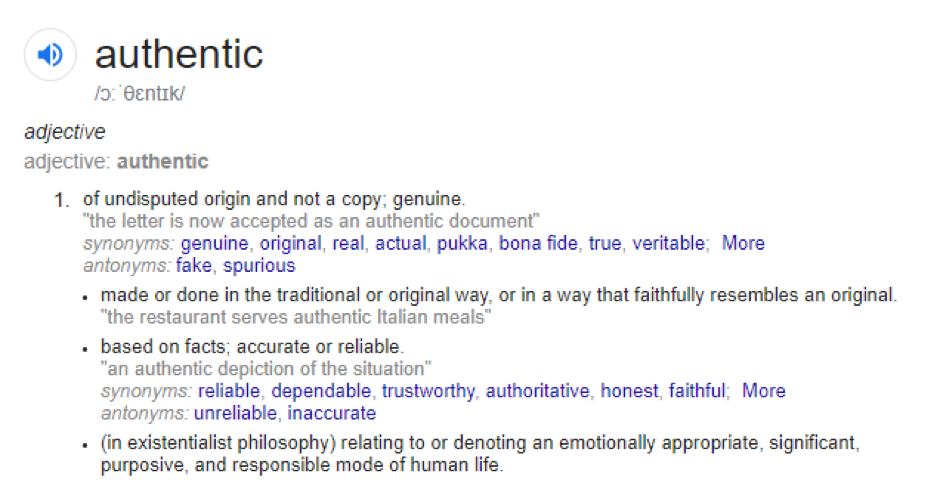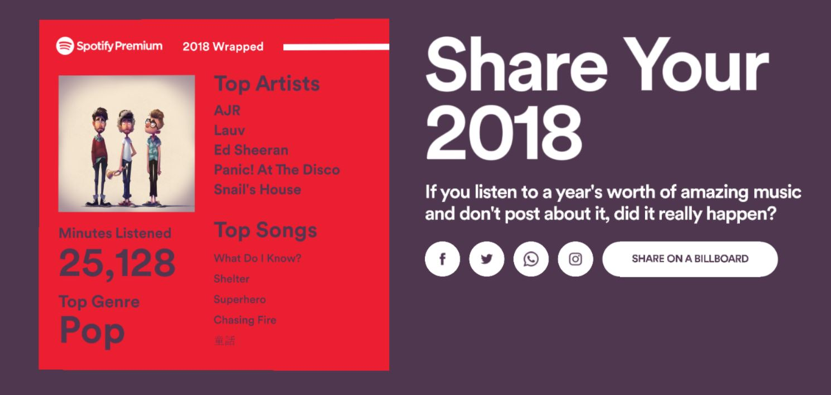Why Now’s The Time For Authentic Content Marketing
At Moondust we’re big fans of authentic content marketing. That’s because we believe that today’s audience demands authenticity and has a much better ability to detect “fake news”. In fact, 90% of consumers look for authenticity and 84% distrust pushy ad formats. In this article, we’re looking at authentic content marketing, why you need it and some hacks to help you make the switch.
Photo by Michael Wright on Unsplash
What Is Authentic Content?
Let’s first look at the definition of authentic. Just look at those synonyms… genuine, original, real, veritable. These are all desirable attributes. Especially if you are looking to make a purchase from a brand. Authentic content marketing has the same effect. It cuts through fake, imitation and pretentious and takes consumers to the heart of your brand’s ethos. Consumers are craving authenticity and smart marketers are giving them exactly that.
Why Do We Need Authentic Content Marketing Right Now?
The need for authentic content marketing has been bubbling away for some time. However, there are several recent events which have skyrocketed its urgency. Let’s take a quick look at them.
Firstly, the news that Instagram and Facebook might remove likes. Instagram and Facebook users will now only see a few names of mutual friends instead of the thousands who liked the post. For marketers this means goodbye to utilising fake likes. It also means that your content will have to genuinely resonate with your target audience without all the razzle dazzle.
Secondly, the recent drop in influencer marketing. Influencer marketing has been a trend for several years now and one we have covered in detail. But consumers are growing increasingly critical of influencers and are calling influencers and brands out on being fake. In fact, the UK, the Competition and Markets Authority is making celebrities more accountable for their promotions and enforcing transparency. You can view the pdf here.
Thirdly, we’re now well into targeting Millennials and Gen Z which is the demographic after the Millennials. Whilst the demographics are different, they have one thing in common. They recognise and reject fake news. A study by researchers at Princeton and New York University found that people over 65 years old were far more likely to share false or misleading information on Facebook. While millennials and Gen Z are more likely to research and fact check. This means, if your brand is not being authentic, today’s audience will expose it.
Now we know why authentic content marketing matters, let’s look at some practical ways you can make it happen for your brand.
#1 User Generated Content (UGC)
Nothing is more authentic than user generated content. This is you allowing your consumers or fans to take an active role in populating your blog, social media or reviews. More than the brand, customers trust each other a lot. In fact, more than 60% of the people trust the comments posted or photos taken by other customers over those taken by the brand itself.
Adobe ran a great UGC called Art Makers, where inventive designers were asked to share their artwork and highlight their skills using an Adobe product such as Illustrator or Photoshop. Adobe then used these shared UGC for user recommendations, product promotions and other expert endorsements.
Tip- There are plenty of ways brands can get onboard with user generated content. One good way is to open your blog with a “Guests” section. Here you can allow verified users to publish reviews or product tips. It’s important to verify all blogs prior to publishing to avoid spam, however, part of being authentic is allowing comments and reviews that are not 100% positive. The key is to listen and address criticism, not to delete it.
#2 Utilise Micro Influencers
Forget hiring Jennifer Lopez to promote your new tech product. Celebrity influencers are fast being seen as inauthentic, and millennials and Gen Z’s are calling them out left, right and centre. But that doesn’t mean influencer marketing is dead. Micro-influencers can build credibility as they tend to have a genuine interest in the products they endorse. Micro-influencers may have 1,000 to 100,000 followers. Significant, but far less than celebrities.
For example, a micro influencer might be a professional photographer who is using a Canon camera to take shots on Instagram. The camera is promoted, but it’s done in a very authentic way by a professional who really knows his or her subject matter.
Audible, Amazon’s audiobook and podcast division, partnered with photographer Jesse Driftwood who posted a photo of himself using Audible. In the caption, he explained how he uses Audible to learn more about business management while involved in other activities.
Although Driftwood has under 100,000 followers, his fans are particularly loyal and engaged. “His simple anecdote makes followers feel as if they’re receiving an authentic suggestion from a friend,” says Harley Schachter, president of Travel Mindset.
94% of consumers consider micro-influencers to be more knowledgeable than macro-influencers/celebrities. It’s unsurprising then that people are 10 x more likely to follow the recommendations of a non-celebrity blogger than a celebrity.
Tip- Many micro influencers will support your brand in exchange for free products or services, so they are a cost-effective influencer marketing solution. You can find them by searching for key hashtags in your niche and plucking out thought leaders in that space. You can also look at your brand’s own top fans to see if any of them have a large following.
#3 Employ Human Responses
It’s not only what you post proactively that makes you an authentic brand. It’s how you respond to fans too. Whether your fans love you or hate you, the need to be authentic in your response is greater than ever.
One of the biggest content marketing mistakes is to use an inauthentic tone online. Think about it. Would you really speak that way? Are you sounding like a human or an automated response robot? Are you sorry when you mess up? One of our favourite brands, Innocent Drinks, strikes the perfect balance between humour, engagement and keeping it real on Twitter. Check out the interaction on their “It’s Blue” campaign this year:
They are funny, engaging and relatable. But watch what happens when a fan makes a more serious comment… the brand steps up with a serious response.
And then again
Tip- Innocent Drinks gives us an array of shining examples for authentic social media responses. Firstly, address users with their name and address their specific question or complaint. Secondly, apologise if you’re delayed in answering or admit if you screwed up or caused offense. Thirdly, look for UGC that you can include in your blog or retweet to others.
#4 Personalise Your Content
Content personalisation definitely has a place in authentic content marketing. If you receive an anonymous email, with a generic subject line that doesn’t even have your name on it, does it feel real or a bit spammy? Big brands like Netflix know this and they’ve tapped into big data to personalise their communications with customers. By offering tailored updates and recommendations, the brand makes its users feel special and understood. It also promotes increased loyalty by feeding its fans.
Music streaming giant, Spotify is also known for content personalization with its #2018Wrapped campaign being a great example of this. Among the data presented by Spotify was the total time you'd spent listening to songs, the number of songs you'd listened to, your most-listened-to artists, and your top genres
The campaign brought in 28 million users in a week and became the #1 trending Twitter topic globally. It also generated over five billion streams with its “Your Top Songs 2018” playlist.
Tip- Not every brand has access to data like the big boys and girls at Spotify and Netflix. However, by simply segmenting your client database and personalising your email content, you will see higher click through and conversion rates. You can segment users into not purchased/ purchased and multiple purchases, for example. Then you will send 3 different emails addressing the 3 different types of recipient.
What’s Inauthentic?
Here’s a quick checklist of inauthentic content you might want to rethink:
· Native advertising/sponsored content
· Banner Advertising
· Fake Reviews/ 100% Glowing Testimonials
· Outdated statistics
· Canned responses
· Cliché stock photos












